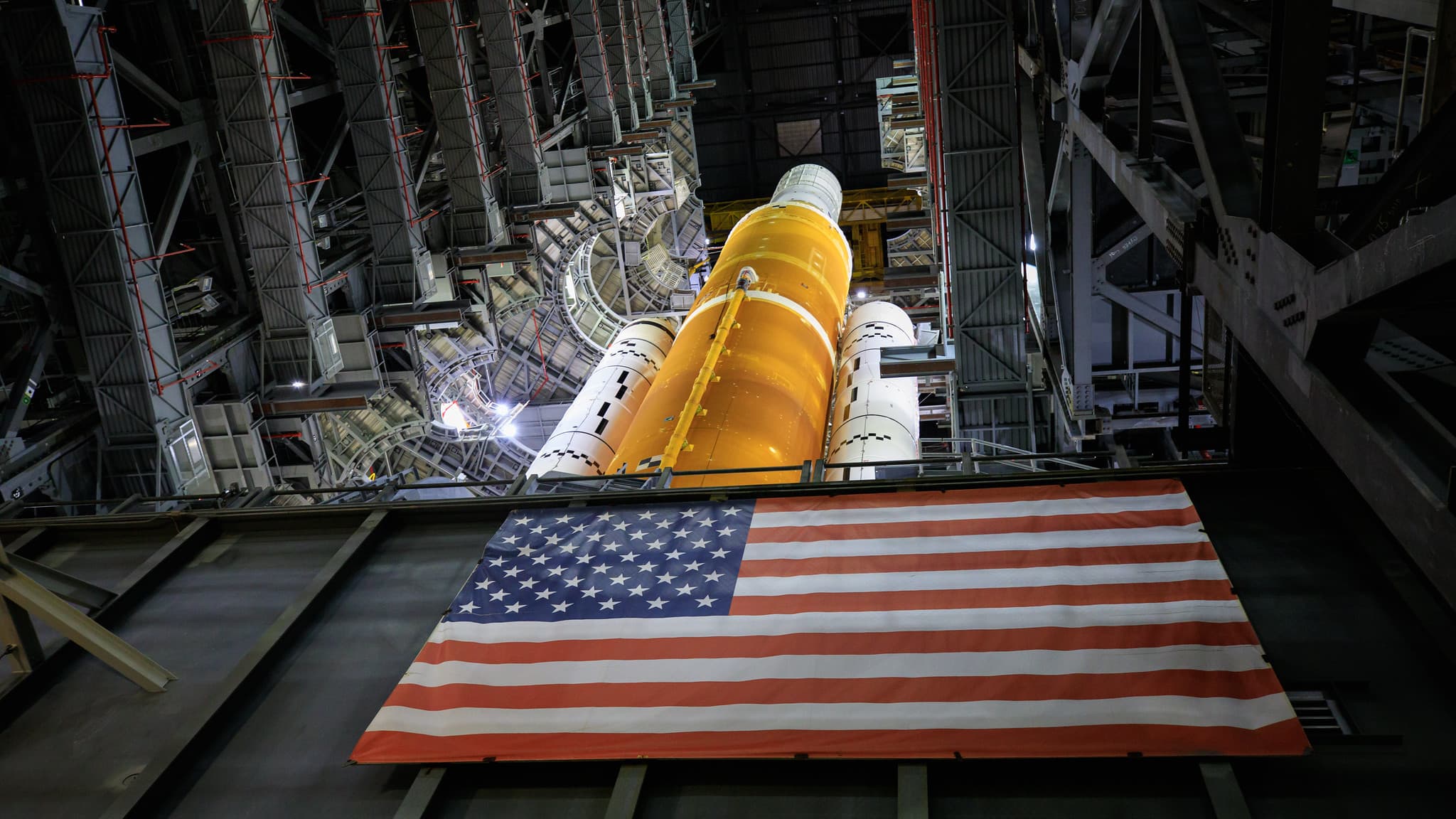NASA’s massive moon rocket will cost taxpayers billions more than projected, auditor warns Congress

The Artemis 1 mission Space Launch System (SLS) rocket
Frank Michaux / NASA
To the moon, indeed.
NASA’s auditor didn’t mince words when he told lawmakers Tuesday that the space agency’s lunar program is going to cost a ton more per mission than initial projections suggested a decade ago.
“We found that the first four Artemis missions will each cost $4.1 billion per launch, a price tag that strikes us as unsustainable,” NASA Inspector General Paul Martin said during a meeting of the House Subcommittee on Space and Aeronautics.
Artemis is the name of NASA’s lunar program. It represents a series of missions for which the agency is developing its Space Launch System (SLS) rocket and Orion capsule, which would deliver astronauts to the moon. Boeing is the lead contractor building SLS, while Lockheed Martin is leading Orion development.
In 2012, shortly after SLS was announced, NASA officials estimated that each mission would cost about $500 million — with the rocket targeting a 2017 debut. Today, the cost has ballooned eightfold, according to the NASA auditor.
There are other costs, too. Martin said the $4.1 billion estimate is only for production costs and ground operations, “and does not include development costs required to get the Artemis program to this point in time.”
“It’s a challenging development [process], of course, but we did see very poor contractor performance on Boeing’s part – poor planning and poor execution,” Martin said. “We saw that the cost-plus contracts that NASA had been using to develop that combined SLS and Orion system work to the contractors rather than NASA’s advantage, and for NASA’s part we saw poor project management and contract oversight.”
Boeing didn’t immediately respond to a request for comment on Martin’s remark.
While NASA last year delayed the first Artemis astronaut moon landing to 2025, Martin said that the time needed to develop a crew lunar lander and next-generation spacesuits mean that mission “likely will slip to 2026 at the earliest.”
The climbing cost per launch for SLS is staggering in comparison to another monster rocket in development: SpaceX’s Starship.
Starship prototype 20 stacked on top of Super Heavy booster 4 at the company’s facility in Boca Chica, Texas.
SpaceX
Starship is the fully reusable rocket that SpaceX is developing, with the goal of creating a vehicle that can carry cargo and people to the moon and Mars. SpaceX CEO Elon Musk recently estimated that Starship’s development cost would be 5% to 10% of the Apollo-era Saturn V rocket – which, at an inflation-adjusted $50 billion, puts Starship’s development cost at $2.5 billion to $5 billion.
Beyond a development cost at a fraction of SLS, SpaceX also expects the cost per launch will be far less expensive – with Musk saying last month that he is “highly confident it would be less than $10 million.”
Neither SLS nor Starship have reached space yet, but both rockets’ inaugural launches are tentatively set for this year.
Starship is also important to NASA’s Artemis program, as SpaceX last year won a $2.9 billion contract to develop a moon-specific version of the rocket to serve as the crew lunar lander. While SpaceX has not stopped its own Starship development since beginning testing in earnest in 2019, NASA lost nearly seven months of time to work with SpaceX due to a protest and lawsuit filed by Jeff Bezos’ Blue Origin last year.
NASA representatives continue to present SLS and Orion as crucial to a “sustainable” approach re-establishing a human presence on the moon.
But the costs continue to mount. The Inspector General’s recent audit of Artemis found $40 billion has already been spent on the program, with NASA “projected to spend $93 billion on the Artemis effort” through 2025.




